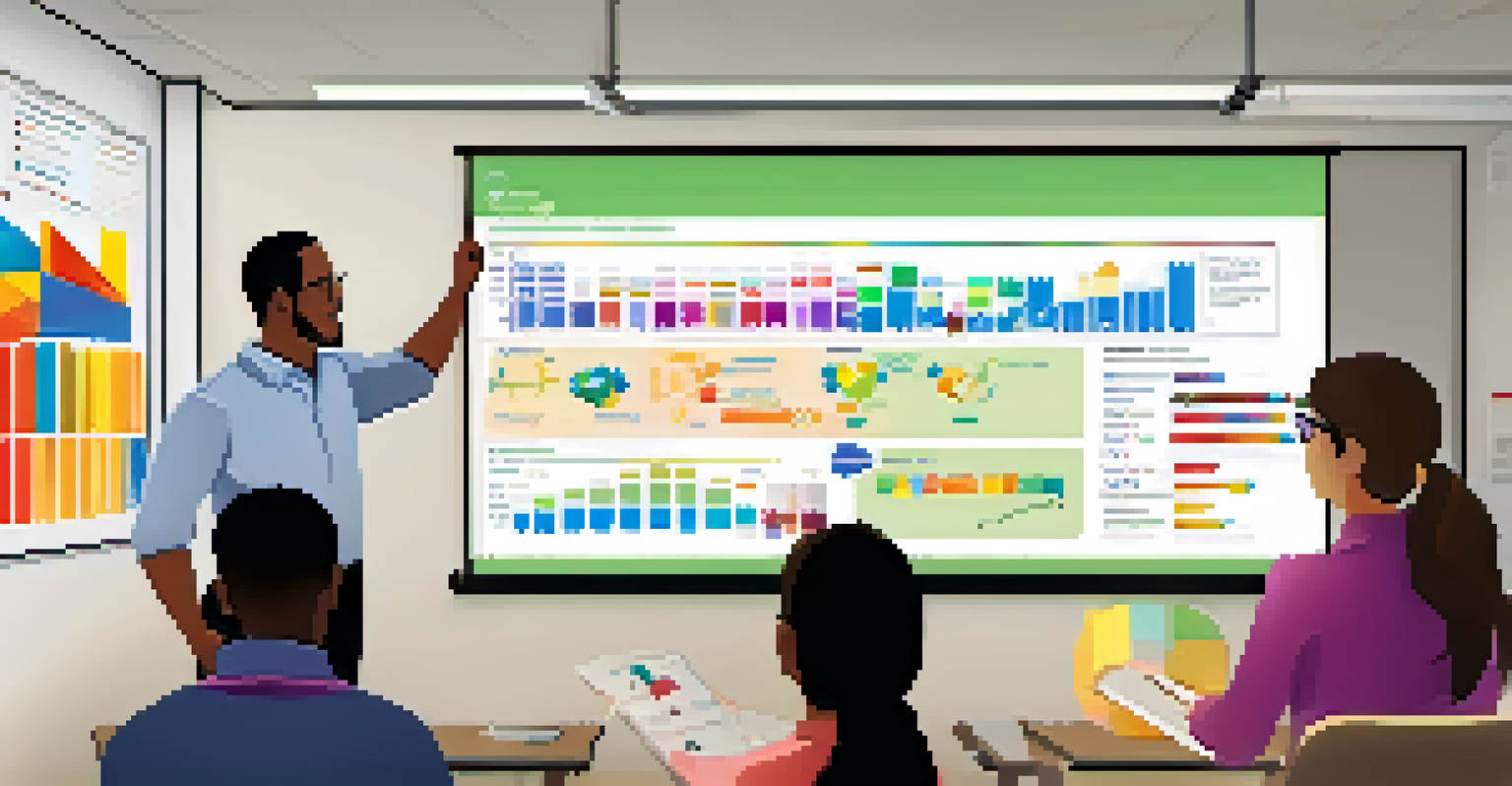How to Effectively Administer Digital Assessments in Class

Understanding Digital Assessments and Their Benefits
Digital assessments are online tests that evaluate student learning in real-time. They offer a flexible alternative to traditional exams, allowing for immediate feedback and analysis. This can enhance the learning process by giving students timely insights into their performance.
Education is the most powerful weapon which you can use to change the world.
One of the main benefits of digital assessments is accessibility. Students can take assessments from various devices, making it easier to accommodate different learning environments. This flexibility can significantly reduce anxiety, as students can choose a setting where they feel most comfortable.
Moreover, digital assessments often come with features such as automated grading and analytics. Teachers can quickly identify areas where students struggle, allowing for targeted support. This data-driven approach enables educators to tailor their teaching strategies to meet diverse student needs.
Choosing the Right Digital Assessment Tools
Selecting the right tools is crucial for effective digital assessments. There are numerous platforms available, each with unique features catering to different educational needs. It's essential to consider factors like user-friendliness, compatibility with various devices, and the specific assessment types required.

For example, platforms such as Google Forms or Quizlet offer straightforward interfaces that make creating assessments a breeze. They also provide options for varied question formats, from multiple-choice to open-ended answers. Choosing a tool that aligns with your teaching objectives will enhance the overall assessment experience.
Digital Assessments Enhance Learning
Digital assessments provide real-time feedback, making it easier for students to understand their performance and improving the overall learning experience.
Additionally, ensure that the chosen tools comply with data privacy regulations. Protecting student information should always be a priority. Researching and selecting reputable platforms can help maintain a safe and secure assessment environment.
Preparing Students for Digital Assessments
Before administering digital assessments, it's essential to prepare your students. Familiarize them with the technology they will be using to mitigate any potential confusion. Providing practice assessments can help students become comfortable with the format and navigate the tools efficiently.
The beautiful thing about learning is that no one can take it away from you.
Consider holding a brief workshop or tutorial session to walk students through the process. This could involve demonstrating how to log in, select answers, and submit their assessments. Addressing any questions or concerns they may have will foster a sense of confidence as they approach the actual assessment.
Encouraging open communication about technical issues is also important. Make sure students know whom to contact if they experience difficulties during the assessment. This support can alleviate stress and ensure a smoother testing experience.
Setting Clear Guidelines and Expectations
Establishing clear guidelines for digital assessments is vital for maintaining a structured environment. Make sure students understand the assessment format, timing, and any rules regarding collaboration. Clearly outlining expectations helps students feel more secure and focused during the assessment.
Consider providing a written document or video that details all pertinent information. This resource can serve as a reference for students to revisit if they have questions before or during the assessment. Clear communication reduces ambiguity and helps students perform their best.
Choose the Right Assessment Tools
Selecting user-friendly and compliant digital assessment tools is crucial to create an effective and secure testing environment.
Additionally, remind students about academic integrity. Discuss the importance of honesty and the consequences of cheating. Reinforcing these values will help foster a culture of trust and respect within the classroom.
Monitoring During Digital Assessments
Monitoring student progress during digital assessments is crucial for ensuring fairness and integrity. Utilize the tools available on the assessment platform to track participation and time management. Many platforms offer real-time analytics, allowing you to see which students are engaged and who may need additional support.
Incorporating a proctoring system can also enhance the integrity of the assessment. This could be as simple as having students log in via video conferencing software, allowing you to observe them during the test. This additional layer of oversight can deter academic dishonesty while providing reassurance to students.
Encourage students to reach out if they encounter technical issues or feel overwhelmed. Being present and available during the assessment can help maintain a calm atmosphere and reassure students that support is at hand.
Analyzing Results and Providing Feedback
After the digital assessment is completed, take time to analyze the results thoroughly. Many digital tools offer instant analytics that highlight overall class performance and individual scores. This data can be invaluable in identifying trends and areas for improvement in both teaching and learning.
Providing timely and constructive feedback is essential for student growth. Share not only scores but also specific comments on strengths and areas for development. This approach helps students understand where they excel and where they can improve, fostering a growth mindset.
Feedback Fuels Student Growth
Timely and constructive feedback after assessments helps students identify strengths and areas for improvement, fostering a growth mindset.
Consider incorporating follow-up discussions or reflection activities to reinforce learning. Engaging students in conversations about their performance encourages them to take ownership of their learning journey.
Iterating and Improving Future Digital Assessments
Once you've completed the assessment cycle, it's essential to reflect on the process. Gather feedback from students about their experiences with the digital assessment. Understanding their perspectives can provide insights into what worked well and what needs improvement.
Use this feedback to iterate on your assessment methods. Maybe you'll discover that certain question formats were confusing or that students preferred specific tools. Adjusting your approach based on real student experiences can lead to more effective assessments in the future.

Additionally, stay informed about new technologies and best practices in digital assessment. The educational landscape is constantly evolving, and being open to change will ensure that your assessment strategies remain relevant and effective.